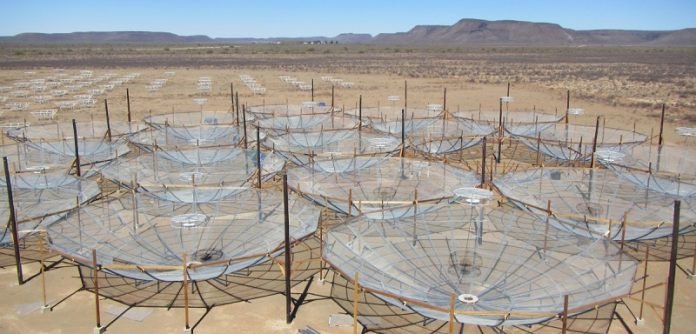
An array of 350 radio telescopes in the Karoo desert of South Africa is getting closer to detecting the “cosmic dawn” — the era after the Big Bang when stars first ignited and galaxies began to bloom.
A team of scientists from across North America, Europe, and South Africa has doubled the sensitivity of a radio telescope called the Hydrogen Epoch of Reionization Array (HERA).
With this breakthrough, they hope to peer into the secrets of the early universe.
“Over the last couple of decades, teams from around the world have worked towards a first detection of radio waves from the cosmic dawn.
While such a detection remains elusive, HERA’s results represent the most precise pursuit to date,” says Adrian Liu, an Assistant Professor at the Department of Physics and the Trottier Space Institute at McGill University.
The array was already the most sensitive radio telescope in the world dedicated to exploring the cosmic dawn.
Now the HERA team has improved its sensitivity by a factor of 2.1 for radio waves emitted about 650 million years after the Big Bang and 2.6 for radio waves emitted about 450 million years after the Big Bang. Their work is described in a paper published in The Astrophysical Journal.
Although the scientists have yet to detect radio emissions from the end of the cosmic dark ages, their results provide clues about the composition of stars and galaxies in the early universe.
So far, their data suggest that early galaxies contained very few elements besides hydrogen and helium, unlike our galaxies today. Today’s stars, have a variety of elements, ranging from lithium to uranium, that are heavier than helium.
Ruling out some theories
When the radio dishes are fully online and calibrated, the team hopes to construct a 3D map of the bubbles of ionized and neutral hydrogen – markers for early galaxies – as they evolved from about 200 million years to around 1 billion years after the Big Bang.
The map could tell us how early stars and galaxies differed from those we see around us today, and how the universe looked in its adolescence, say the researchers.
According to the researchers, the fact that the HERA team has not yet detected these signals rules out some theories of how stars evolved in the early universe.
“Our data suggest that early galaxies were about 100 times more luminous in X-rays than today’s galaxies. The lore was that this would be the case, but now we have actual data that bolsters this hypothesis,” says Liu.
Waiting for a signal
The HERA team continues to improve the telescope’s calibration and data analysis in hopes of seeing those bubbles in the early universe.
However, filtering out the local radio noise to see the signals from the early universe has not been easy.
“If it’s Swiss cheese, the galaxies make the holes, and we’re looking for the cheese,” says David DeBoer, a research astronomer in University of California Berkeley’s Radio Astronomy Laboratory.
“HERA is continuing to improve and set better and better limits,” says Aaron Parsons, principal investigator for HERA and a University of California Berkeley Associate Professor of astronomy.
“The fact that we’re able to keep pushing through, and we have new techniques that are continuing to bear fruit for our telescope, is great.”
Source: McGill University.



